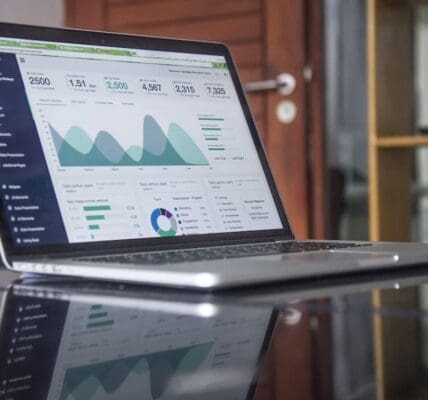Email marketing has become an essential tool for businesses to connect with their audience and drive sales. However, the success of email marketing campaigns is heavily dependent on various factors, one of which is the frequency of emails sent. Finding the right balance between sending too few or too many emails can greatly impact the effectiveness of your campaigns. In this article, we will explore the importance of email frequency and provide tips and strategies for determining the optimal frequency for your email marketing efforts.
Key Takeaways
- E-mail frequency is important for maintaining engagement and building relationships with subscribers.
- Factors to consider when determining e-mail frequency include audience preferences, industry norms, and content availability.
- Identifying your target audience and their preferences is crucial for determining the optimal e-mail frequency.
- Avoiding e-mail fatigue and unsubscribes can be achieved by providing valuable content and respecting subscriber preferences.
- Industry and niche can impact e-mail frequency, with some industries requiring more frequent communication than others.
Understanding the importance of email frequency
Email frequency refers to how often you send emails to your subscribers. It plays a crucial role in the success of your email marketing campaigns. Sending too few emails may result in your audience forgetting about your brand or losing interest, while sending too many emails can lead to email fatigue and increased unsubscribes.
When you send emails too infrequently, you miss out on opportunities to engage with your audience and build a relationship with them. Regular communication through emails helps to keep your brand top-of-mind and allows you to provide valuable content and offers to your subscribers. On the other hand, bombarding your subscribers with too many emails can overwhelm them and lead to them unsubscribing from your list.
Factors to consider when determining email frequency
When determining the optimal email frequency for your campaigns, there are several factors that you should consider. These factors include industry, audience, and goals.
1. Industry: Different industries have different norms when it comes to email frequency. For example, a daily deals website may send multiple emails per day, while a B2B software company may only send a monthly newsletter. It’s important to research and understand what is considered acceptable in your industry.
2. Audience: Understanding your target audience is crucial in determining the right email frequency. Consider factors such as their preferences, habits, and engagement levels. For example, if you have a highly engaged audience that enjoys receiving frequent updates, you may be able to send emails more frequently. However, if your audience is less engaged or prefers less frequent communication, you may need to adjust your frequency accordingly.
3. Goals: Your goals for your email marketing campaigns should also influence your email frequency. If your goal is to drive immediate sales, you may want to send more frequent promotional emails. However, if your goal is to provide valuable content and nurture relationships with your subscribers, you may opt for a less frequent schedule.
Identifying your target audience and their preferences
Understanding your target audience and their preferences is crucial in determining the optimal email frequency. By gathering information about their preferences, you can tailor your email marketing efforts to better meet their needs and expectations.
One way to gather information about audience preferences is through surveys or polls. You can ask your subscribers directly about their preferred email frequency and the type of content they would like to receive. Another method is to analyze engagement metrics such as open rates, click-through rates, and unsubscribe rates. These metrics can provide insights into how your audience is responding to your current email frequency.
Additionally, segmenting your audience based on their preferences can help you deliver more targeted and relevant content. By dividing your subscribers into different groups based on factors such as engagement level or interests, you can send emails at a frequency that suits each segment.
Avoiding email fatigue and unsubscribes
Email fatigue occurs when subscribers become overwhelmed or disinterested in receiving emails from a particular sender. This can lead to decreased engagement and increased unsubscribes. To avoid email fatigue and unsubscribes, it’s important to provide valuable content and ensure that your emails are relevant to your audience.
Segmenting your audience allows you to send more targeted emails that are tailored to their specific interests and needs. By delivering content that is personalized and relevant, you can increase engagement and reduce the likelihood of subscribers becoming fatigued.
Another strategy is to provide a clear value proposition in each email. Make sure that your subscribers understand the benefits of receiving your emails and what they can expect to gain from them. This will help to keep them engaged and interested in your content.
The impact of industry and niche on email frequency

The optimal email frequency can vary depending on the industry or niche that your business operates in. Different industries have different norms and expectations when it comes to email frequency.
For example, a daily deals website or a fashion retailer may send emails more frequently, as their audience expects to receive regular updates on new deals or products. On the other hand, a B2B software company may only send a monthly newsletter, as their audience may prefer less frequent communication.
It’s important to research and understand what is considered acceptable in your industry or niche. Look at what your competitors are doing and how their audience is responding to their email frequency. This can provide valuable insights into what may work for your own email marketing efforts.
Testing and analyzing the effectiveness of different frequencies
Testing different email frequencies is crucial in finding the optimal frequency for your campaigns. By conducting tests and analyzing the results, you can gather data-driven insights into what works best for your audience.
When conducting tests, it’s important to only change one variable at a time. For example, if you want to test the impact of sending emails twice a week instead of once a week, keep all other factors such as content and design consistent.
To analyze the results of your tests, look at metrics such as open rates, click-through rates, conversion rates, and unsubscribe rates. These metrics can provide insights into how your audience is responding to different frequencies. Use this data to make informed decisions about the optimal email frequency for your campaigns.
Creating a content calendar to plan email frequency
Creating a content calendar can help you plan and organize your email marketing efforts. A content calendar allows you to schedule your emails in advance and ensure that you are sending them at a consistent frequency.
When creating a content calendar, consider factors such as holidays, events, and promotions that may impact your email frequency. Plan your content accordingly to ensure that you are providing timely and relevant information to your subscribers.
A content calendar also allows you to balance promotional and informative emails. By mapping out your content in advance, you can ensure that you are providing a good mix of promotional offers and valuable content to your audience.
Balancing promotional and informative emails
Finding the right balance between promotional and informative emails is crucial in maintaining engagement with your audience. While promotional emails can help drive sales, informative emails provide value and build trust with your subscribers.
A good rule of thumb is to follow the 80/20 rule, where 80% of your emails provide valuable content and 20% are promotional in nature. This ensures that you are not overwhelming your audience with constant sales pitches and allows you to build a relationship based on trust and value.
When creating informative emails, focus on providing content that is relevant, educational, or entertaining to your audience. This can include tips, how-to guides, industry news, or case studies. By providing valuable content, you can keep your subscribers engaged and interested in receiving your emails.
Personalizing emails to increase engagement and reduce frequency
Personalizing your emails can greatly increase engagement and reduce the need for frequent communication. By delivering content that is tailored to the individual preferences and interests of your subscribers, you can increase the relevance and value of your emails.
There are several ways to personalize your emails. You can use dynamic content to display different content based on the recipient’s preferences or past behavior. For example, if a subscriber has shown interest in a particular product category, you can include personalized recommendations in their email.
You can also use segmentation to deliver more targeted emails. By dividing your audience into different segments based on factors such as demographics, interests, or engagement level, you can send emails that are specifically tailored to each segment. This allows you to deliver more relevant content and increase engagement.
Continuously monitoring and adjusting email frequency for optimal results
Email marketing is not a set-it-and-forget-it strategy. It requires continuous monitoring and adjustment to ensure optimal results. By regularly analyzing metrics and gathering feedback from your audience, you can make informed decisions about your email frequency.
Monitor metrics such as open rates, click-through rates, conversion rates, and unsubscribe rates to gauge the effectiveness of your email frequency. If you notice a decline in engagement or an increase in unsubscribes, it may be a sign that you need to adjust your frequency.
Additionally, gather feedback from your audience through surveys or polls. Ask them directly about their preferences and whether they feel that the current email frequency is appropriate. This feedback can provide valuable insights into how your audience is responding to your emails.
Finding the right email frequency is crucial in the success of your email marketing campaigns. By understanding the importance of email frequency and considering factors such as industry, audience, and goals, you can determine the optimal frequency for your campaigns.
Avoiding email fatigue and unsubscribes requires providing valuable content and ensuring that your emails are relevant to your audience. Segmenting your audience and personalizing your emails can greatly increase engagement and reduce the need for frequent communication.
Continuous monitoring and adjustment of email frequency is necessary to ensure optimal results. By testing different frequencies, analyzing the results, and gathering feedback from your audience, you can make informed decisions about your email frequency.
By applying the tips and strategies discussed in this article to your own email marketing efforts, you can maximize the effectiveness of your campaigns and drive better results.
FAQs
What is e-mail frequency?
E-mail frequency refers to the number of times you send e-mails to your subscribers or customers within a specific time frame.
Why is e-mail frequency important?
E-mail frequency is important because it can affect the engagement and retention of your subscribers. Sending too many e-mails can lead to unsubscribes, while sending too few can lead to disinterest.
What factors should I consider when choosing e-mail frequency?
When choosing e-mail frequency, you should consider the preferences of your subscribers, the type of content you are sending, and the goals of your e-mail marketing campaign.
How often should I send promotional e-mails?
The optimal frequency for promotional e-mails can vary depending on your industry and audience. However, it is generally recommended to send promotional e-mails no more than once a week.
How often should I send newsletters?
The frequency of newsletters can also vary depending on your industry and audience. However, it is generally recommended to send newsletters once a month.
What should I do if my subscribers are unsubscribing?
If your subscribers are unsubscribing, it may be a sign that you are sending e-mails too frequently or that the content is not relevant to their interests. Consider adjusting your e-mail frequency or reevaluating your content strategy.












